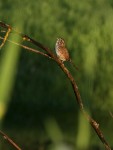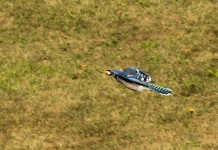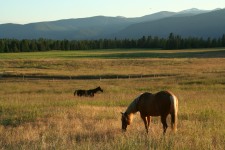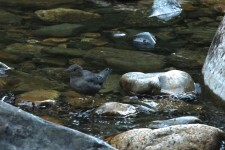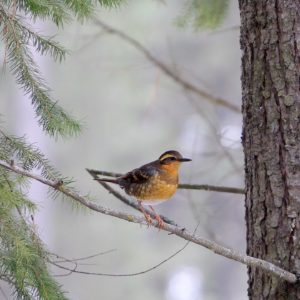
For a long time I heard a whistle-like bird song in the woods and couldn’t identify it. I heard the song in the woods around home and in the mountains. I was never able to see the bird making the sound. Then one day several years ago, I saw a robin-sized bird I had never seen before with a blue-gray back, burnt-orange belly and throat, a black breastband, and an orange line over its eye–a varied thrush.
Once I identified the bird, I looked online to find its song and the mystery was solved. The varied thrush’s song is a single-pitch tone that is close to a single-pitch whistle. The long whistles are repeated at varying pitches with pauses in between.
Varied thrushes tend to live in dense understories of conifer and mixed forests. They prefer mature and old-growth forests typically larger than 40 acres. However, in winter they can be seen in backyards and parks where berries and fruit are found.
In the summer though, they tend to stay in thicker forests and forage in the leaf litter. They forage by picking up dead leaves with their bill and then hopping backwards or to the side to reveal hiding insects. They feast on beetles, ants, caterpillars, crickets, millipedes, snails, earthworms, spiders and other invertebrates.
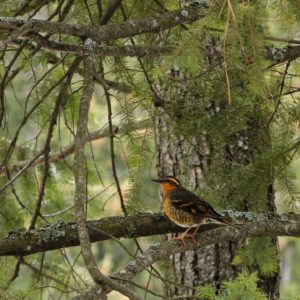
Come winter, they switch to eating berries, wild fruits, seeds and acorns. During the summer, they are solitary but during the winter they form loose flocks of up to 20 birds to forage on fruits and berries of snowberry, honeysuckle, mistletoe, ash, manzanita, blueberry, huckleberry and thimbleberry.
When time comes to build a nest, the varied thrush remains in the thickest forest. They build a nest in the understory about 10 feet off the ground and close to a tree trunk. Often the varied thrush will build a nest near an old nest or even on top of an old nest. One to six light sky blue eggs with dark speckles are laid in the soft-lining of the nest. Twelve days later the eggs hatch.
Another generation of varied thrushes will soon begin singing their songs from perches in the understory where they will most likely be heard more often than seen.

